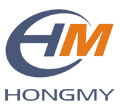A Comprehensive Overview of Commonly Used Materials
Double-sided PCBs are a crucial component in many modern electronic devices. They provide a sturdy platform for mounting electronic components and connecting them using conductive tracks. The fabrication process involves multiple materials, each with specific properties and purposes. In this article, we explore the materials commonly used in the production of double-sided PCBs.
1. Substrate Materials
The substrate is the foundation of a double-sided PCB, providing mechanical support and insulation between the layers. Common substrate materials include:
- FR-4: This flame-retardant fiberglass-reinforced epoxy laminate is widely used due to its excellent electrical insulation properties, mechanical strength, and affordability.
- Polyimide: With its high-temperature resistance, flexibility, and reliable performance, polyimide substrates are ideal for applications where flexibility is crucial, such as in aerospace and military industries.
- Metal Core: Metal core substrates, like aluminum or copper, offer better heat dissipation capabilities, making them suitable for power electronics and LED applications.
2. Copper Foil
Copper is the most commonly used material for conductive pathways on double-sided PCBs. Copper foils with different thicknesses are laminated onto the substrate using an adhesive. The main types of copper foils include:
- Electrodeposited (ED) Copper: This copper foil type is produced by electroplating and is known for its good adhesion and high conductivity.
- Rolled Annealed (RA) Copper: RA copper foils are manufactured by a rolling and annealing process, providing a smoother surface suitable for fine-line etching.
- Low-profile Copper: This type of copper foil has a low profile, ensuring a good balance between adhesion and conductivity, making it ideal for high-frequency applications.
3. Soldermask and Silk Screen
The soldermask is a protective layer applied over the copper traces, preventing short circuits and oxidation. The silk screen layer provides component placement and identification markings. The commonly used materials for soldermask and silk screen include:
- Epoxy: Epoxy-based soldermasks and silk screens offer good electrical insulation, excellent adhesion, and high-temperature resistance.
- Liquid Photoimageable (LPI): LPI soldermasks are applied as liquid and cured using ultraviolet light. They provide high resolution and are suitable for fine-pitch applications.
- Legend Ink: Legend inks are used for component identification and markings on the PCB. They are typically made of epoxy or acrylic-based materials with high opacity and good adhesion.
4. Inner Layer Bonding Materials
The bonding materials are used to laminate multiple layers of the double-sided PCB together, ensuring proper adhesion. The most commonly used bonding materials include:
- Prepreg: Prepreg is a combination of resin and reinforcing fibers, such as fiberglass. It is used to bond the core and prepreg layers together during the lamination process.
- Adhesive Sheets: Adhesive sheets are die-cut pieces applied between the core layers to strengthen the bonding between the substrate and the copper layers.
5. Soldering Materials
Soldering is the process of connecting electronic components to the double-sided PCB. Different types of soldering materials are used, including:
- Solder Paste: Solder paste is a mixture of flux and solder powder used for surface mount technology (SMT) assembly. It is essential for reflow soldering.
- Solder Wire: Solder wire is used for manual soldering and touch-up processes. It typically contains a flux core for proper bonding and flux activation.
In conclusion, the fabrication of double-sided PCBs involves the use of various materials, each playing a vital role in the overall functionality and durability of the PCB. The selection of appropriate materials depends on factors such as cost, performance requirements, and the specific application of the PCB.

